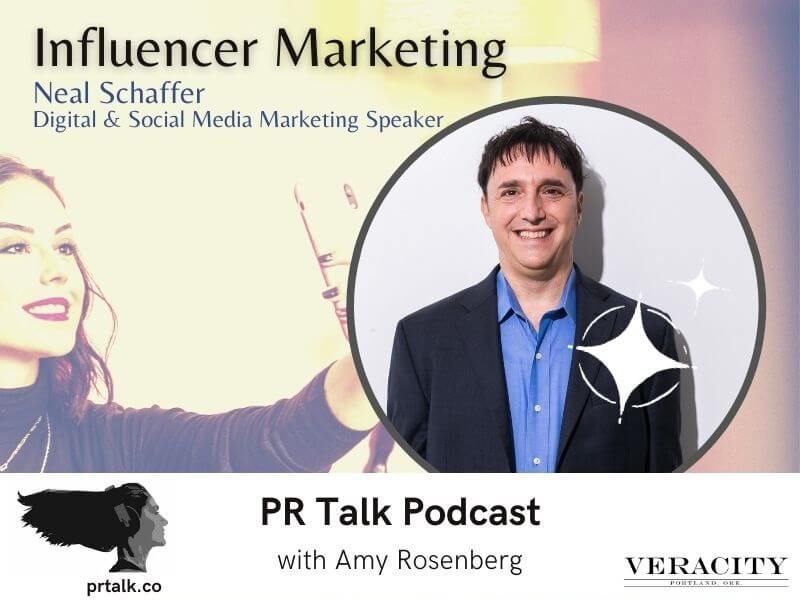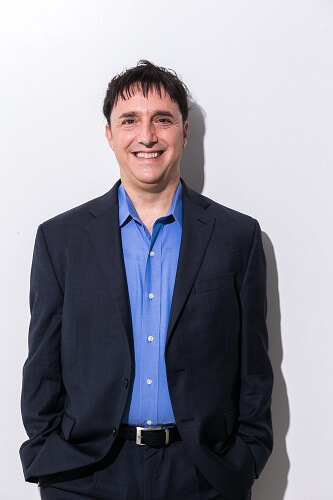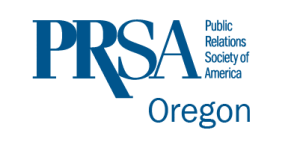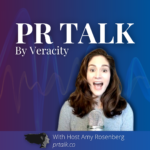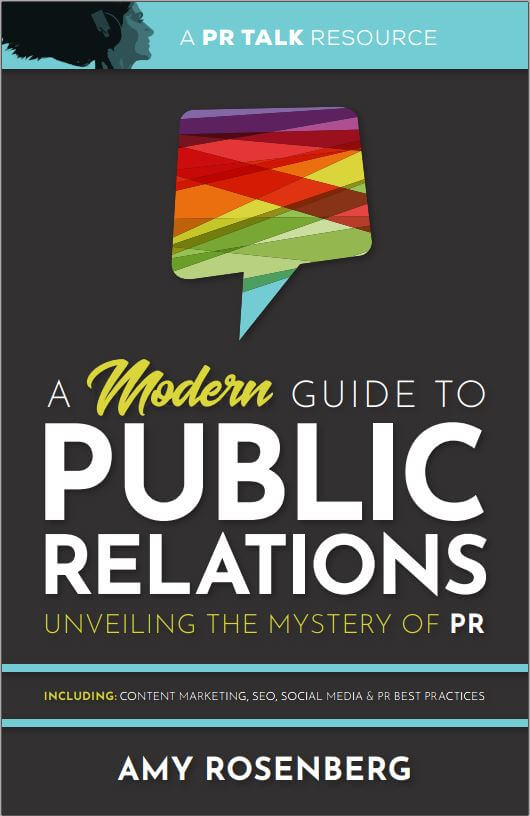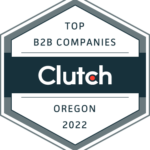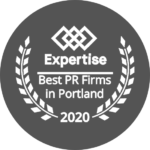Influencer Marketing with Neal Schaffer
PR People Are Already Marketing to Influencers
On the latest episode of the PR Talk Podcast host Amy Rosenberg interviews digital and social media marketing expert Neal Schaffer. Neal has written four books on social media including his most recent, The Age of Influence. Neal and Amy discussed Influencer Marketing during the interview, including the fascinating origins of the discipline which go all the way back to Charlie Chaplin and Babe Ruth.
“Influencer” isn’t a dirty word
If you cringe when you hear the term: “influencer,” it might be due to its reputation based on vanity metrics (followers) and overpriced endorsements. The digital equivalent of a celebrity endorsement, influencer marketing got its start by focusing on celebrities with millions of followers charging huge sums for social posts or endorsements. But the success of these campaigns was measured with vanity metrics like follower counts, leading to inflated costs that were more than the actual return. Moreover, the followers were purchased, further driving their value down.
Influencer marketing grew because people started throwing money at, resulting in corruption due to vanity and falsified metrics. There is no real ROI for a like or a follow. However, influencers don’t have to be celebrities. The savvy marketer will focus on the digital or social media influencer.
Focusing on micro-influencers (10,000-50,000 followers) and nano-influencers (1,000-10,000 followers) provide better options in extending branding efforts. In fact, a great place to find your influencers is to examine your employees and comb your customers. You may find you already have micro or nano-influencers and you can work on converting them into brand ambassadors.
The definition of a digital influencer and how to find them
If influencer marketing isn’t all about celebrities, then who are the influencers to partner with? Are top executives influencers? Neal says that they are (or at least should be) influencers, but not necessarily digital influencers. If a CEO doesn’t participate on social media they can’t be a digital influencer.
All of this sounds a lot like thought leadership, doesn’t it?
That’s where PR comes in to find — or help create — these micro and nano influencers. Employees tend to like, know and trust their brands the most. So first look at employees, for example sales people are influencers that are monetizing their influence with sales. In many organizations the CEO should be a primary influencer (aka thought leader).
After starting with employees, look to partners (distributors, resellers) then to customers.
Tools like Voila Norbert can be used to mine email addresses with social media data to connect with customers that may be potential influencers. From this you can develop a brand ambassador program.
While not discussed on the podcast, I have recently discovered SparkToro as a great tool to find potential influencers, websites, podcasts and YouTube channels based on keyword association.
Similarities between PR and Influencer Marketing
Influencers are the media in digital media. So the two marketing categories are essentially performing the same duties. If you consider bloggers and podcasters as a part of the media, like we do at Veracity, you are doing influencer marketing already. Amy says to think about it like this:
“If you do it right, influencer marketing is thought leadership, thought leadership is influencer marketing.” — Amy Rosenberg
Ready to become a B2B digital influencer?
Once you (or your executive) are ready to become a digital influencer, Neal provides some advice on how to start and pick which networks to participate in (I know you are all thinking LinkedIn for B2B). However, it is really hard (and/or expensive) to go from zero to @garyvee so begin by representing your company and then move to representing your industry.
Starting with the content type (text, image, video, audio) will help guide you to which social networks to focus on (of course you can do it the opposite way, meaning if you know you want to be an Instagram influencer, you better use images). In B2B marketing most content creation is going to be textual, video or audio (podcasts). There aren’t a lot of CEOs that are true visual content creators. This naturally leads to LinkedIn typically being the top social channel, but can also help decide which other networks to focus on. Neal also notes that if you don’t enjoy doing it, it won’t last.
“If you hate Tik Tok, stay off it. If you love to speak, do a podcast. Consistency is key as it is a competition for attention.” — Neal Schaffer
Here is a summary of the content medium, types and the social networks best suited:
Textual | Blogs, Articles | LinkedIn, Facebook, Twitter
Video | YouTube | LinkedIn, Facebook, Instagram
Audio | Podcast | Linkedin, Facebook
Visual | Imagery, Photos | Instagram, Facebook, Pinterest
What should the PR maximizer do?
Amy and Neal also talk about what PR maximizers can do, how brands typically suck at content (hint people are much better at it than brands), and even a little about their similar experiences living in Japan.
Click through to listen or watch the entire episode or even review the transcript below. As always, you can access more great episodes by subscribing to the PR Talk podcast on iTunes, Stitcher, Google Podcasts, iHeart Radio and Spotify.
Influencer Marketing with Neal Schaffer Transcription
Amy Rosenberg: [00:00:00] I have Neal Schaffer here today. Hi, Neal.
Neal Schaffer: [00:00:03] Hey, how’s it going?
Amy Rosenberg: [00:00:04] Good. So Neal is an influencer first and foremost, and an author, a speaker. And he is going to be speaking with us today about influencer marketing and LinkedIn marketing. And he’s written two books. His most recent book is The Age of Influence. And then before that, it is maximizing LinkedIn for business, as was, I think, your first book. Right?
Neal Schaffer: [00:00:30] So I’ve actually written four books. Ok, and my first two books were on LinkedIn and they were published back in 2009. And in 2011, I wrote a book called Maximizing LinkedIn for Sales and Social Media Marketing. In 2013, I published a book called Maximize Your Social. And then The Age of Influence came out in 2020.
Amy Rosenberg: [00:00:49] Well, so can you just talk to us about all of this? Because in marketing, there’s a lot of buzzwords. So we’ve got influencer, you’ve got LinkedIn, we’ve got social like what is it all? And what is actually what is an influencer, first and foremost.
Neal Schaffer: [00:01:05] Yeah. So I guess just to take a step back, I’ve always been in the you know, I work I live to serve my own and ever since I left corporate and I’ve been on my own. And I’m sure that there are solo partners out there, maybe people that have their own PR agency, maybe journalists that want to go and do more freelance work. When you are by yourself starting a company, you need to serve the audience that you have, serve your current clients, serve those people that are listening to you. So I began my journey. I left corporate life back in 2008 and I began as a blog about LinkedIn because this was the only social network for professionals back then. And that led to me ending up because this was 2008, 2009, very similar to the economic situation where we are today, big transformation for many reasons in our economy and what have you. So that’s when I wrote my first book in 2009 on LinkedIn. And that ended up me launching what I call a social media marketing strategy consultancy in 2010. Now my background is actually B2B sales. I did do some business, have to do some marketing, but I lived and worked in Asia for 15 years and I often was what you would call the country manager, regional VP for Asia. So I had to wear a lot of hats. So yes, I had to drive revenue, but I had to hire people. I had to rent office space. I had to go and register to the Chinese state authorities, our domain name. So lots of other things. This experience in Asia gave me this really holistic business experience that even though my background was sales when all of this started taking off, where I don’t even think we call it social media marketing back in 2009, really, social media first lived with PR and probably some of you that have been around the block are nodding at the beginning.
Neal Schaffer: [00:02:49] I think a lot of budgets for social media began with PR, especially with reputation management. And we need to get Radian6 and everybody was Snout’s, you know, snapping up Radian6 and PRR was was very much in charge of that reputation management. So what happened after that? And really, as I wrote my next two books, the market has shifted away from just LinkedIn to we have Facebook now. We have Twitter now. We had the emergence of Instagram, Pinterest, and therefore my second book was more business book. And then my third book really reflected the work I was doing, which was helping companies create a social media marketing strategy and develop a way to measure the why of that. So I don’t have a PR background. And in 2010, companies weren’t looking to me for my PR expertise. They were looking for help with social media and it was often VP of marketing GMOs and therefore I gravitated towards that marketing side. Today I still do social selling trainings where I get back to my roots in B2B sales. But the influencer marketing, I mean, if we look at the landscape today with coronaviruses especially, we’ve had the entire digital transformation that’s affected every industry. Right. And with coronavirus, you know, we’ve always been digital first in the way we consume content and coronaviruses just even further accelerated that.
Neal Schaffer: [00:04:03] But more importantly, it’s made businesses realize, well, we have to digitally engage people. If we’re not doing that, we’re just we’re invisible.
Amy Rosenberg: [00:04:10] So let’s go back because this is a lot
Neal Schaffer: [00:04:13] And then we’ll get to influencer marketing. But, yeah, that’s sort of the background. And I want to mention sales and I want to mention influencer marketing and I want to mention public relations, because the three things that these that are in common here is it’s a one to one relationship. Right? Marketing is inevitably one to many, and it’s often driven by immediately measurable ROI. PR there’s ROI well. I mean, Goodwills is a intangible asset, right.
Neal Schaffer: [00:04:41] But when you have relationships with them, they are relationships, I think of regardless of the political spectrum. I think of the vice presidential debate last night and Kamala Harris saying, you know, Joe Biden told me that foreign relations is all about relationships, it’s all about making friends, sticking true to your word, helping people and. Lonesome marketing is all about relationships as well, so I’m now telling marketers, you know, if you don’t have the time to create individual relationships one on one, maybe should involve your PR team. And I actually think the same with how journalists found new a new beginning with content marketing. I believe the influencer marketing gives the potential for PR professionals to have a similar new area in which I. I honestly think they could significantly contribute to the success of whatever company they’re working for in that area. So I’ll take a step back now.
Amy Rosenberg: [00:05:30] Ok, so there’s a lot here. So PR and influencer marketing has a lot of similarities and I do want to talk about that. I just I want to go back to your earlier experience in Asia. Sounds like you’re running companies or groups. Right. So how does how did social media and LinkedIn say whatever was around then? How did that come into play for you there?
Neal Schaffer: [00:05:54] It didn’t. This was entirely before social media. I was one of the first million members of LinkedIn because I was involved in a a Silicon Valley, you know, company. So it was high tech. And I think a lot of the LinkedIn early adopters were high tech. There was some business development guy. I don’t even know where he got my, you know, my email. But anyway, I got an invite. I joined really didn’t do anything with it. It was when I was in transition for the first time in 2008 when I was back in Southern California. No local network, no industry network. It’s like I got to do something networking wise. And that’s where I really helped them LinkedIn. But what was interesting is that later on in January 2010, I was negotiating my first business contract. I had formed an LLC. At the same time, I had a job offer for Director of Business Development APAC for a high tech company, and they were twenty something co-founders who were married. And they said, Neal, if you’re going to be if you want to work here, you got to unplug from social media. It’s not going to help you do your job. And it’s like, OK, this is the fork in the road. Right? And that’s how I decided that. I just thought there was way too much upside with social media. So, yes, that is, you know, my professional career really is before social media because it’s just not the mass scale it is today. Just so few people were on it that there was little you could do.
Neal Schaffer: [00:07:09] So when you’re talking about director of marketing and sales and they’re saying no social media or no LinkedIn, what does that so like, can we kind of unpack that we get like how incorrect that possibly was? Because marketing and sales. So how do we use LinkedIn for both disciplines?
Neal Schaffer: [00:07:31] Yeah, so you mean in two thousand twenty, two thousand twenty one, correct?
Amy Rosenberg: [00:07:34] Well, possibly. I mean well, I would just say now I think. Yeah, how? I think that there two majorly different topics. But I think at that point you are probably looking at using LinkedIn possibly as more of a sales tool for certain companies or certain jobs. And then you evolved to be looking at it as more of a marketing tool.
Neal Schaffer: [00:07:54] Yeah, I’d say at the beginning it was LinkedIn for networking back in 2008. It was my first book was influenced by my own job search and my own personal branding. So that definitely played a role in that as well. But really, back in 2010, 2011, we saw more and more companies trying to tap into LinkedIn companies that were trying to create LinkedIn groups, for example, as a marketing, you know, marketing effort, trying to we didn’t have the term employee advocacy back then, but definitely trying to tap into getting their employees on LinkedIn. And obviously, there’s you know, if you’re in B2B sales, LinkedIn is a no brainer. But today, if you’re in real estate, it’s a no brainer. If you’re in insurance sales, it’s a no brainer. So even be to see if you’re targeting a wealthy consumer demographic, then from a sales and marketing perspective, LinkedIn is a no brainer as well. So it becomes one of those networks. But it really started out, you know, LinkedIn for sales and marketing is still very limited because everybody was talking about Facebook back then and even more so Twitter. And therefore, after I wrote my first book in 2009 and when I started the consultancy in 2010, I realized that marketing social media market was not going to be just about LinkedIn. I didn’t want to be the one-trick pony. And therefore I started doing my own Facebook, my own Twitter. I think I joined both back and I think I joined Twitter two thousand eight as well, Facebook two thousand nine.
Neal Schaffer: [00:09:27] And then as I picked up clients, I had to do a lot of learning. Right. And I had to become experienced in all these platforms. So it’s not me telling the customer they need to use these platforms. It is their needs and where their audiences dictates what platforms need to be included in the strategy. So it was really doing a lot of that social media strategy consulting work where I became fluent in really every platform I could. So, you know, fast forward, you know, a lot of people from ten years ago know me as LinkedIn expert you were talking about. I’ve written a book on LinkedIn for people that remember me. They still see me that way. I see myself as not being the ultimate expert in anything, but really well versed in everything and being able to tap into that and really provide a very holistic, you know, strategy and solutions for my clients because everybody has different needs when it comes to all of this. Right. So that’s where LinkedIn came in. And then obviously Facebook, Twitter were heavily marketing focus, not sales focus at all. Today there’s a little bit of Facebook for sales, but still primarily marketing. And then obviously we have the emergence of Instagram, which has taken over Facebook for a lot of companies. We have Tik Toc emerging. We’ve had Snapchat. Pinterest is sort of out there for e-commerce, for female demographic. So there’s it’s all we’ve had blogging, we’ve had YouTube, we’ve had content marketing and we’ve had influencer marketing and influencer marketing.
Neal Schaffer: [00:10:49] So influencer marketing has been around for a long time. Influencer marketing really has emerged. It’s the digital equivalent to a celebrity endorsement right into my book, I think The Age of Influence. I think the first chapter or the first two chapters, I go into the history of this, right. That it’s actually that concept of tapping into someone that’s famous and then promoting your brand. It’s Charlie Chaplin. It’s, you know, it’s Babe Ruth and silent films and radio commercials. And then obviously the TV commercial. And even today we still have that.
Amy Rosenberg: [00:11:20] So I just want to be clear. Yeah. People there’s kind of a rumor going around that we’re not interested in influencer marketing. So I just want to preface that it has changed.
Neal Schaffer: [00:11:32] So it’s changed because the consumer, how we consume content change. So if we can ignore the fact that we have an Internet, then, yeah, we can go back and do business as usual. But it has changed. And the analogy I like to give, you know, when I was growing up, when I was in high school to age myself here, Top Gun came out and the next week one of my good friends showed up at school and high school, riding a motorcycle with a leather jacket and a Tom Cruise haircut. That when I was growing up, the people that influenced my generation were celebrities, right? They were movie stars. They were sports stars. They were musicians. Ask your kids who influences them. They are tick talkers. Their Instagram was their YouTube. That is a fundamental shift. I mean, you know, unprecedented shift. When the Internet emerged, the celebrity endorsement was still strong. And in fact, we can say some of it converted over. But when we get to social media, especially the last. Five years, right, you know, Instagram and YouTube and Twitter and Snapchat as well, I guess you could say the visual has really changed. What’s happened is that brands can still create a Facebook page. They can use ads, they still have mass brands can still show up in search results. They have the resources they can create the content they can invest in. SEO, how many brands are doing podcasts? How many brands are doing YouTube channels? How many brands are doing Instagram channels correctly? Right. The reason why people rule these channels is because they’re better content creators than brands. Brands suck creating content? I will say that again, brands suck at creating content. Any brand could have invested money to become an influencer.
Amy Rosenberg: [00:13:12] And they did when you say that. So let’s not talk about it. So who are you’re saying that people are influencing these channels? Those people are influencers. So let’s talk about who those people are now. There might not be celebrities now. They could be anybody. And I read in your book that you even say that the CEO might not even be an influencer in your company. So then who are they?
Neal Schaffer: [00:13:39] Ok, so there’s there are influencers and there are digital influencers, right. There might be a CEO who’s extremely influential, who just is not on social media. So and that is a valid influencer. So what I’m talking about here are we spend more time online. I mean, that’s the number one sort of activity we do as people these days. And when we’re online, the number one thing we do is social media. Right. So when I’m talking about as people that are influential in social media, so what does that look like now? You know, the history of influencer marketing started with the celebrity endorsement, but we didn’t really hear about influence marketing as a buzzword until, I don’t know, three or four years ago. So you have things like the frye festival, right? You have things like who are these people that have 10 million followers and charge twenty thousand dollars per post on Instagram? So you have an industry that’s been developed and you had a lot of consumer-facing brands that threw a lot of money at vanity metrics, for lack of a better word. You know, PR professionals probably, you know, some PR professionals. Look at those likes on Instagram as vanity. Some may not similar to how some PR officials look at clips as vanity metrics.
eal Schaffer: [00:14:48] And others say, well, that is a valid metric to see the exposure that you’re that your press release got. Right. Similar similar fact. But what happens, the influencer marketing industry grew because brands were spending a lot of money. So it’s almost like a conflict of interest, influencer marketing industry and all the talent agencies and marketing agencies and tools, they’re all pushing people with more and more influencers because they can charge more and therefore they get a bigger commission. Right. So what happens is, well, you know, if just having more followers is worth more money, I’m going to use bots. I’m going to do anything I can just to get more and more followers and I’m going to buy fake followers. And that is what’s happened over time. So in parallel, these people have priced themselves out of the market. There’s no ROI for the like. Companies are looking for more ROI in terms of deeper engagement. Right. And all the way back to the website, the shopping cart, what have you. So what happens now is that back in 2015 and 16 and I’m not from the influencer marketing industry, I’m an outsider here. Right. So don’t don’t don’t get mad at me.
Neal Schaffer: [00:15:48] But they started to say, you know what? Even micro influencers have influence. These are people that have between ten and fifty thousand followers. So they’ve widened the pyramids, that there’s more and more influencers in the pool that brands can choose from and they can find people at a more reasonable rate. Then interrupt. Before I started writing The Age of Influence, they started talking about nano influencers. And these are people that have between one and ten thousand followers. So that’s the definition that I stick to. But I say, look, if someone with a thousand followers, they talk about Instagram. I say any social networking site, anyone that has a thousand followers has some influence, because if they have a thousand followers, number one, they probably have somewhat of a personal brand. They filled out their personal profile. Number two, they’re publishing content. I don’t know if it’s their own content. Right. They might just be curating content. They might be just sharing company content, like if you’re a salesperson, but they have enough reach. That’s, you know, your brands Facebook business page. So that’s ten thousand fans might get five, ten engagements for post. These people with a thousand followers are going to get 10, 20, 50, maybe 100 engagements purpose.
Amy Rosenberg: [00:16:57] So how do you find these people that might be your influencer?
Neal Schaffer: [00:17:03] This is where the PR professional comes in, like Robin Hood on the horse, because when you continue to read The Age of Influence, so you know, all these brands were chasing all these people with lots of followers because they were influential about certain subjects. Right. But when it gets to the nano influencer level, I said, let’s take a step back. OK, how many people that already know, like and trust our brand, are in our sphere of influence. So where do we start? Who likes, knows and trust us the most, our employees. OK, 98 percent of American employees are active on at least one social media profile, right? This is 10 years ago. I couldn’t say that today we can say millennials are the majority of our workforce. So more and more I and even my 15 year old daughter is like five, six hundred followers on Instagram. Right. So more and more, there’s a lot of people around us that have more and more influence. So we first look at our employees. If we’re a B2B organization, our salespeople are influencers because guess what? They can monetize their influence. They don’t monetize their influence through twenty-five dollars Amazon gift cards for an Instagram post. They monetize it through sales and the bonuses they get.
Neal Schaffer: [00:18:17] Ideally, the executive, the CEO should be the ultimate influencer of your organization. And if I was a PR professional, I mean, I’m working with the CEO of a large company right now, and he understands he wants to be the role model if he expects his employees to be advocates for the brand in social media. Right. He has to be the role model. So you have sometimes PR professionals that are managing the social media accounts and the content of the executive team and helping them, which is valid. You have the internal communications that sometimes is trying to be the cheerleaders to get the employees on board. But you start with that, right? And then you start to branch out who are our partners? Right. If we have resellers, we have distributors, partners. Right. That’s another layer of people that like know they make money every time they get business with our product and service. And then what’s exciting for me is we take it out one step further. We look at who are our customers. We literally go into our customer database, there are free I know as a PR professional, you’re thinking, is this really legit? But there are tons of free tools. They’re not free tools. They’re inexpensive tools at Fortune 500 brands use to take an email address. From a customer database and a pendant with social media information, append it with an Instagram profile or LinkedIn profile, whatever you want, write one service that I use, I recommend it’s called Voila Norbert. Funky name, but great service, very inexpensive. So now we can see who of our customers are nano influencers. I did this with a hair color company that’s a client of mine, and they were taking the opposite approach to reaching out to people and hoping that they would work together as a PR professional. If you’re doing a cold pitch, they don’t convert very well, just like a cold call for sales doesn’t convert real well, but they found that there are people like 150,000 followers and Instagram profiles are already customers. Now a marketer. So a marketer. Let me just finish with this. The marketers are now saying, how do I reach out? What do I say? The PR professionals say they’re already a customer. I can craft a personalized message and say, hey, we’re starting a brand ambassador program. We noticed you’re one of your one of our customers and you’re pretty active and social. How might we be able to collaborate? You have 15 minutes for quick call to chat, right? That’s where the PR professional comes in and I think can really drive this forward.
Amy Rosenberg: [00:20:31] Oh, OK. So now what about consumer versus B2B? Because I’m curious, like the CEO who wants to lead and do a lot of social is the CEO and a consumer brand or B2B just for an example. And then, of course, let’s just talk about how you can possibly leverage this for B2B.
Neal Schaffer: [00:20:52] I think that it’s more I mean, it could be both, right? If you want your employees to get involved, then it really starts at the top. Now, when it comes to B2C, I don’t know how many CEOs are true visual content creators because consumer you know, in social media, it’s visual content, primarily in B2B, it’s more textural content, more podcasts, more videos of people talking. So that’s where the B2B should be a natural. And one thing that I’ve found is that with coronavirus and with digital marketing, I think that more and more executive team, they want to have more direct contact with the end customer and you sort of lose a lot of that digitally and you sort of want to get it back. You want to be able to communicate directly with the consumer or with the B2B buy or whatever it is. And that’s where the executive team has the ability to do that. By just directly, I mean, the CEO that I work with when he talks, people subscribe. His employees subscribe to his podcast. Right. And for him, it’s like I know that every day there’s all sorts of noise out there within the company and different company news and blog posts. But I can be direct and I want everybody in our company to hear this. And when you begin not only to represent your company but to represent the industry, you now have content that is suitable, both internal and external. Right?
Amy Rosenberg: [00:22:12] I love that. Mm hmm.
Neal Schaffer: [00:22:14] So that’s where I believe that the CEO, especially of B2B, can be more impactful. But even B2C, we’ve seen Richard Branson, Elon Musk, we can go on and on. But I mean, you have to have something to say. You have to feel comfortable on a public stage. It’s not for everybody. And I get that. So I wouldn’t force it on an executive, but there’s huge potential if they join along.
Amy Rosenberg: [00:22:35] So speaking of B2b, it sounds like for me possibly uneducated about this, my brain just goes to LinkedIn. So what do you say about that?
Neal Schaffer: [00:23:07] Yeah, in terms of social media, B2B, LinkedIn, without a doubt, every company that’s B2B that I work with, that is the first platform of choice is number two. Twitter is number two, Facebook. Is number two Instagram, it’s usually either Twitter and or Facebook, but, yes, you’re absolutely right. But there’s two different ways of looking at this is where we take a step out of social media and the digital media. Right. You have social networks, but you also have content mediums. And the notion of yielding more influence is you’re probably going to yield more influence in one of the four major types of content mediums, either text, which is a blog, visual imagery, which primarily is Instagram, not limited to then your video, which I consider YouTube, and then you have audio, which is podcast. So whether you want your team to have your employees to have more or you want to tap into other people’s influence, that’s really where you need to begin. What content medium will it be? Because that often will decide what social networks you should be more active on than others. So, yes, you could be a LinkedIn, but wouldn’t be great if you also had a podcast. So in addition to sharing information on LinkedIn, you could also link back to your podcasts. You could also link back to your YouTube video, or you could link back to your company’s podcast, your company’s YouTube video, in addition to the blog post.
Amy Rosenberg: [00:24:33] So and there’s so much that you can do. So a maximizer like me. I want to do everything for you. So what do you do? How do you narrow it down or do you narrow down? Should you just do it all?
Neal Schaffer: [00:24:45] Well, if we’re talking about individual people, the golden rule here is if you don’t enjoy doing it, it’s not going to last. OK, you got to be passionate about it, OK? Yeah, if you know, if if you hate tik tok, then stay the heck off it. Right. There’s plenty of other social networks. If you don’t like video, don’t do video. If you love to speak to a podcast, right. Do whatever is going to be easiest and whatever is going to last longer because you don’t want to become one of the 50 percent of podcasts that only go 10 episodes. Right. Or the people that go I’m starting a video channel this year and then two YouTube videos later. You never hear from them. As you know, consistency is key not just because of the way the algorithms work, but it’s a competition for attention. And the minute your podcast, your, you know, your YouTube channel, the minute you drop off, people find other content in their feed and they engage with that and you lose that engagement. Right. So that’s why consistency is important if you want to be successful.
Amy Rosenberg: [00:25:43] Ok, so let’s kind of pivot over to the differences or the some. Actually, I think there are more similarities between PR and influencer marketing because a lot of people say PR is about relationships, even though in my intro to this podcast, I say it’s not about relationships. Oh, doing it right, OK, because I think it’s beyond relationships. I don’t think you can do a lot of national PR with just relationships. Right. Like, I can’t necessarily have that relationship, you know, with thousands of reporters, but I can still get the coverage. But for LinkedIn or LinkedIn, I mean, influencer marketing, possibly, it’s easier because it’s online and you can have these relationships. And it also sounds very curated. So when I was reading the intro to your book, it sounds like for influencer marketing, we do want to be thoughtful. We want to curate, you know, what we’re doing. And the same with PR. We don’t blast out emails. It would just go into junk. So we’re very thoughtful about what we do as well.
Neal Schaffer: [00:26:52] Yeah, I just want to throw this out there that, you know, when we think of, media outreach, which is one of the common tasks that we associate with PR who are the media today, who are I believe that the influencers are the media and digital media. And I’ll just give you one talking point, which is, I work with one of the largest book publishers in the world. And in March of 2020, well is actually maybe January, February before this whole pandemic, you know, and I had the conversation. Do you recommend I do traditional media outreach? Should I hire a publicist on and on and on. And their answer was, you know what? We don’t think the ROI in traditional media outreach is there. It’s going to cost you a lot. You might get something, might not. We don’t know how effective it’s going to be. We recommend you reach out to podcasters and bloggers. Right. I get pitched all the time. We want you to know we’d love our client to be on your podcast. We’d love our client to be featured on your blog. That is because influencers are there are only so many people that talk about a certain subject. I was on a podcast interview yesterday and this guy goes, man, I was an influencer in heli-skiing. You know, you’re dropped from a helicopter without realizing it because how many people, how many nano influencers and above are out there that are posting consistently about heli-skiing? And if you have a product, I mean, if you provide tours just for heli-skiing, there’s only so many people out there that you can tap into. Now, big consumer brands have a bigger pool, but you get in the niche B2B, you know, if you want to be found, do Google searches, do social media searches. It’s a finite number of people. And generally, it’s more people you find than organizations that might be from some organizations, some competitors. So that’s what it comes down. That’s really what it comes down to.
Amy Rosenberg: [00:28:39] So what’s really interesting is my firm, we consider podcasters and bloggers, media. So it’s just an interesting way, you know, they’re all on our media list. So it’s a different way to look at it. It’s a little harder because the release of podcasters are not in the traditional media software that we use. We have to go get that ourselves. So and then when I was saying earlier about PR, some PR people not really liking influencer marketing, they’re not valuing it. It’s because of that misconception that everybody must be a celebrity and it might be expensive or that they’re priced out of it.
Amy Rosenberg: [00:29:18] And so that’s just not the case.
About the guest: Neal Schaffer
Neal Schaffer is a leading authority on helping businesses through their digital transformation of sales and marketing through consulting, training, and helping enterprises large and small develop and execute on social media marketing strategy, influencer marketing, and social selling initiatives. President of the social media agency PDCA Social, Neal also teaches digital media to executives at Rutgers University, the Irish Management Institute (Ireland), and the University of Jyvaskyla (Finland). Fluent in Japanese and Mandarin Chinese, Neal is a popular social media speaker and has been invited to speak about digital media on four continents in a dozen countries. He is also the author of 4 books on social media, including Maximize Your Social (Wiley), and The Age of Influence – The Power of Influencers to Elevate Your Brand (HarperCollins), on educating the market on the why and how every business should leverage the potential of influencer marketing. Neal resides in Irvine, California but also frequently travels to Japan.
Connect and follow Neal on social media:
This episode of PR Talk is brought to you by PRSA Oregon
Throughout Oregon and Southwest Washington, PRSA provides members with networking, mentorship, skill building and professional development opportunities – whether you are a new professional fresh out of college or a skilled expert with 20 years in the industry. Check out PRSAoregon.org for more information on how membership can help you grow and connect.

